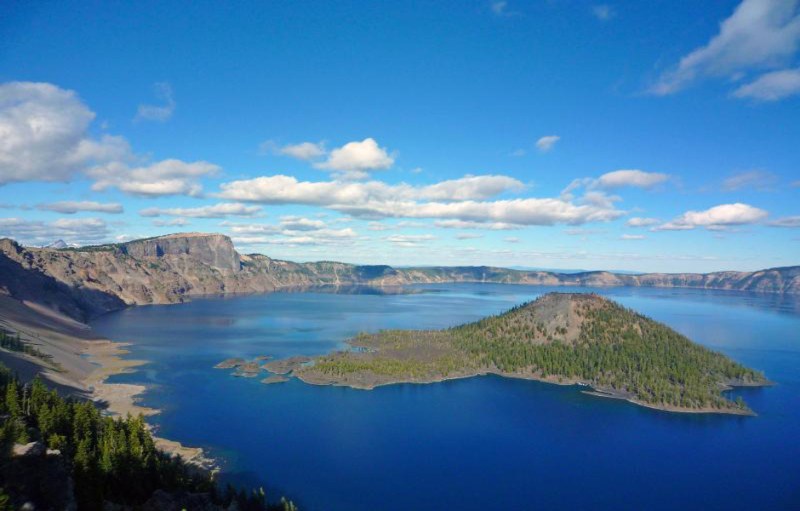
This year, the National Park Service has reached an incredibly impressive milestone, celebrating one hundred years as an agency on August 25. To help the NPS ring in its centennial, The Manual has devoted a regular column to highlighting one of its spectacular parks each month. In addition to providing general information on the regions themselves, we’ll also catch up with park rangers, area advocates, and anyone who contributes to the preservation and operation of each park. Enjoy!
Park name: Crater Lake National Park (Oregon)
Area: 183,224 acres
Authorized: May 22, 1902
Average annual visitors: 471,250
America’s national parks are all beautiful, no doubt, but Crater Lake National Park in Oregon may well be the most utterly gorgeous one of them all. Located in the southern part of the Pacific Northwest state, the park itself surrounds a dormant volcanic crater of the now-defunct Mount Mazama, as well as its neighboring forests. Chock full of several hiking trails, campgrounds, and places to cast a rod and catch some fish, Crater Lake National Park has something for everyone. Even the caldera around the lake allows for visitors to travel across it via vehicle, so if hiking isn’t your thing, you won’t have to miss out on exploring the area.

Aside from the pleasing visuals and charming surroundings, the park’s lake is something to behold. A staggering 1,949 feet at its deepest point, Crater Lake is not only the deepest lake in the United States but the second deepest in all of North America and ninth deepest in the world. Be it kayaking, paddle boarding, or rowing a canoe, the activities visitors are capable of participating in while on the lake are nearly endless. Due to its high elevation (6,475 feet), the climate stays relatively cool even in the summer, but nothing beats a day filled with clear blue sky and sunshine at the National Park Service’s fifth oldest national park. To get a better idea of the park, we caught up with park ranger Jennifer Evans.
What is your favorite part about being a ranger for the National Park Service?
Jennifer Evans: I absolutely love all the places I’ve been fortunate enough to work at and that’s all thanks to the National Park Service. It’s powerful to be here (Crater Lake) and having the ability to see people experience the park and everything it has to offer for the first time.
Are there any hidden gems or unknown facts about Crater Lake National Park you like to tell first-time visitors about?
JE: Due in part to how popular the park has become, especially during summer, I try to tell people about a couple longer trails that tend to be a bit less crowded called Crater Peak and Union Peak trail. Both have gorgeous views of the area with Union Peak having one of the best sights in the entire park at its high overlook. I also try to convince visitors to plan part of their trip around going out at night. Obviously, the park is centered on the lake which requires daylight to see but going out at night provides beautiful views of the Milky Way when it’s clear. It lights up the sky.
Related: Hike, ride, and play in L.A.’s backyard at the Santa Monica Mountains
Why is working for the NPS and Crater lake so important to you?
JE: Simple, it’s the mission. My prime purpose for working with the National Park Service is to help protect the environment of the parks and to teach people as much as we can about the area.
What’s your favorite park of the park?
JE: My favorite hike is a short one called Sun Notch Trail. It’s less than a mile to hike into but it’s probably the closest you can get to the ridge and has, I think, the best view in the park.
All photos courtesy of the National Park Service



